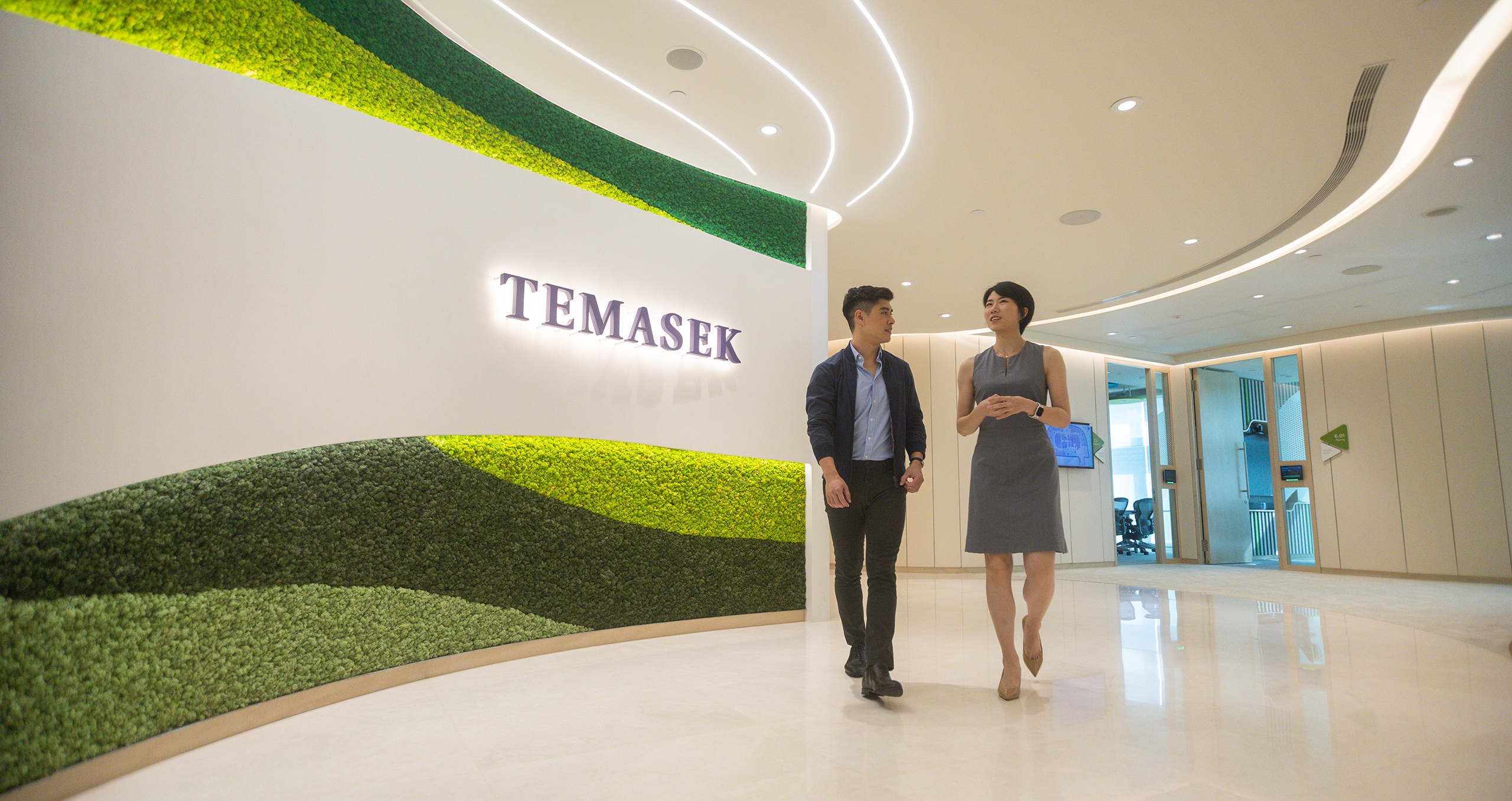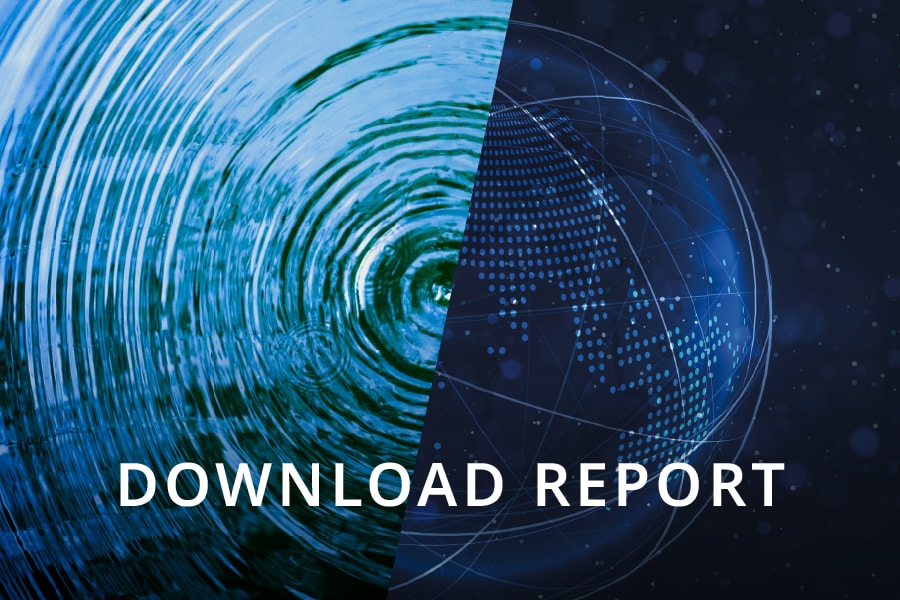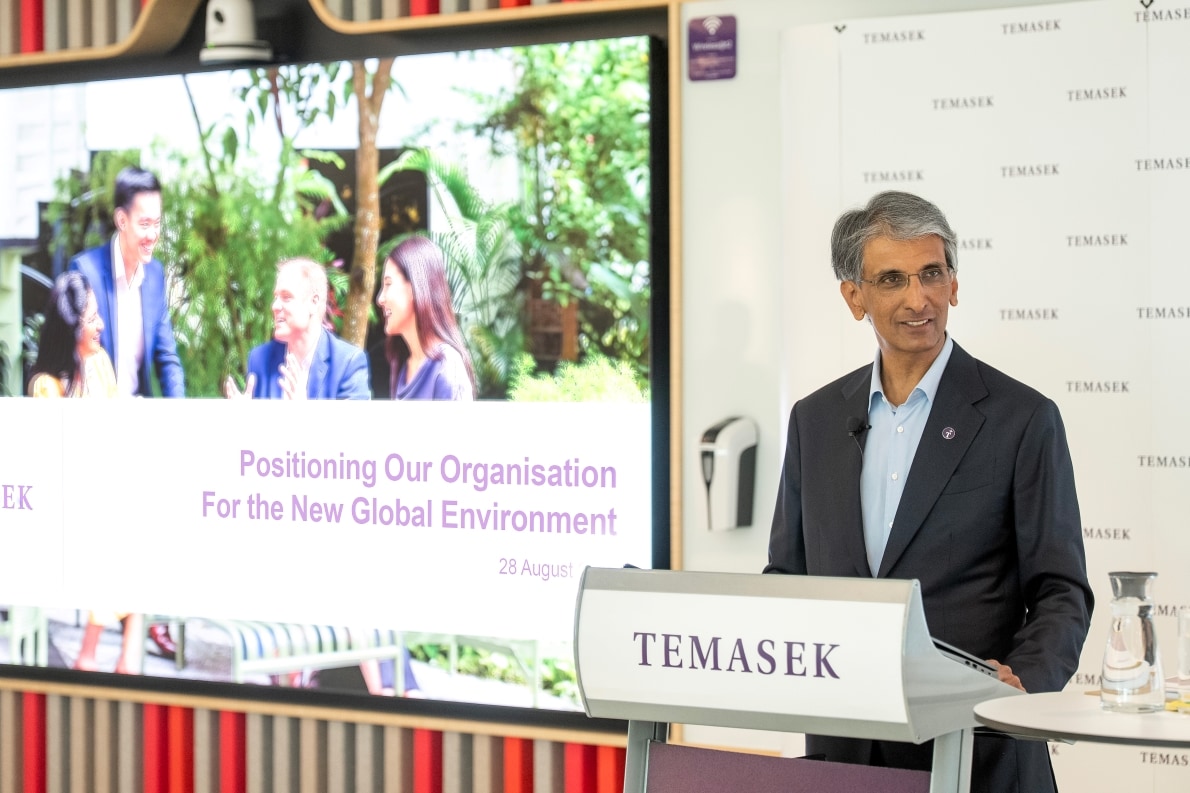Temasek's abiding mantra: Never waste a crisis
Temasek's abiding mantra: Never waste a crisis
The state investor is in a strong position to tackle future challenges after five decades of learning from good times and bad says Dilhan Pillay Sandrasegara, executive director and CEO of Singapore-based global investment company Temasek.

Weathering crises has taught Temasek two fundamental principles that continue to guide it today, says its CEO. First, it is important to focus on quality underlying assets with resilient business models. Second, its long-term view of investing keeps it focused on structural shifts rather than short-term market fluctuations.
The world is experiencing seismic changes in the global order, with the international rules-based order that favoured globalisation and free trade being challenged by rising nationalism, protectionism and fragmentation.
Multilateralism is at risk of being substituted by transactionalism. These shifts are compounded by the transformative impact of artificial intelligence and the ongoing climate crisis. They have a profound impact on Temasek, a global investor with a multifaceted portfolio spanning various geographies and sectors.
1974 – 1990s: A Stormy Beginning
Since our founding in 1974, when times were turbulent, we have understood that change is constant and crises are inevitable. As the saying goes: “Never waste a crisis.” Each crisis and ensuing transformation taught us valuable lessons, shaping Temasek into the organisation we are today – one that senses, adapts and performs to thrive in an ever-changing world.
In 1974, when Temasek was founded, the world faced the Vietnam War and anti-war demonstrations in the US that took place against the backdrop of the Watergate scandal, leading to the only resignation in history of a US president. Meanwhile, the Yom Kippur War in the Middle East led to the Opec oil crisis that contributed to record inflation in Singapore of 30 per cent year on year. Despite the difficult environment, our founding leaders moved ahead boldly and set up Temasek to take over and manage an eclectic collection of 35 companies (valued at $354 million) that the Government had formed for a self-governing, and subsequently, newly independent Singapore. From our founding leaders, we learnt the importance of always doing things with tomorrow in mind. By moving forward decisively, our leaders established Temasek as an independently managed and operated commercial entity that would later evolve into a global investment company.
2010s – 2020s: Expanding Globally
This decade saw us applying the lessons learnt previously. In 2011, we articulated our second 10-year road map T2020 strategy to become a global investment house. We expanded from Asia to developed markets in the US and Europe as we saw opportunities in innovation and growth happening there. In 2011, the US and Europe accounted for just 11 per cent of exposure, but by the end of the decade, this rose to 32 per cent. Drawing on lessons from multiple market cycles, we refined our investment strategy to focus on four structural trends: digitisation, sustainable living, future of consumption and longer lifespans. These trends, which continue through market cycles and cut across sectors and countries, guide us to build a resilient and forward-looking portfolio.
The early days taught us that embracing commercial principles drives sustainable growth in an open economy. Statutory boards such as Singtel and PSA were corporatised and privatised and later transferred to Temasek. Singtel evolved from a statutory board to a publicly listed telecommunications leader with a global footprint today. For PSA, Temasek implemented changes that focused the company on its core port operations, carving out non-core assets like cruise centres and real estate holdings (which became Mapletree), enabling it to grow into a leading global port operator. These experiences of partnering our portfolio companies to achieve growth formed the foundation of our portfolio management approach of driving sustainable business outcomes for Temasek and our portfolio companies.
2000 – 2010: Venturing Out Into Asia
When Ms Ho Ching joined as executive director in April 2002, she began reshaping Temasek’s portfolio, which was then Singapore-centric. In 2002, 94 per cent of it comprised Singapore-based Temasek portfolio companies (TPCs), 4 per cent was in global direct investments (GDIs), and 2 per cent in funds and other instruments. Guided by our first 10-year road map T2010, we focused first on Asia in the 2000s, anticipating its growth after the World Trade Organisation was established in 1995. We invested in banks and telecommunications companies as proxies for rising urbanisation and growing middle-income populations. At the same time, we also supported the globalisation of our portfolio companies and set up asset management companies (AMCs) to galvanise the sector in Singapore. As Asian economies took off despite some crises, so did our investments. From this, we learnt that significant transformation requires courage to try new things and conviction in our strategic vision.
The 2000s saw market turmoil with Sars in 2003 and the global financial crisis from 2008 to 2009. We saw opportunities in these crises, as we could buy high-quality companies at reasonable valuations. Our thesis paid off. We achieved a 10 per cent total shareholder return (TSR) for the decade, growing our portfolio from $77 billion in March 2002 to $193 billion by March 2011. The portfolio composition shifted: The share of Singapore-based TPCs changed from 94 per cent to 56 per cent but grew over $35 billion in absolute terms, while GDIs grew from 4 per cent to 37 per cent. Weathering these crises taught us two fundamental principles that continue to guide us today. First, it is important to focus on quality underlying assets with resilient business models. It was our investments in companies with strong fundamentals that enabled our portfolio to rebound strongly after crises. Second, our long-term view of investing by looking 10 to 20 years ahead, keeps us focused on structural shifts rather than short-term market fluctuations. These principles have enabled Temasek to navigate multiple crises while delivering sustainable returns over the long term.
Focusing on trend-aligned investing led to investments in companies such as Adyen and Alibaba, which showed us the value of identifying trends early and scaling investments as our conviction grows. We saw that digital payments would replace cash early on, and invested $50 million in Netherlands-based payments company Adyen initially. We increased our stake as our confidence in the company grew. Today, Adyen has become an over $60 billion company. Similarly, with China-based tech company Alibaba, we invested small amounts in multiple e-commerce companies, then focused our capital on Alibaba, which ultimately generated billions in returns. This approach helped us navigate a decade of significant market disruption. Despite facing four major challenges – European debt crisis, China stock market sell-off, US-China trade tensions, and Covid-19 – we achieved a 10-year TSR of 7 per cent. TPCs were reduced from 56 per cent of the portfolio to 38 per cent, but still grew in absolute terms by over $36 billion. GDIs rose from 37 per cent to 42 per cent. We also grew our partnerships, funds and asset management companies (PFAs) over the years. Partnerships and funds constitute more than two-thirds of this segment. We have a longstanding portfolio of high-quality fund investments and have deepened strategic partnerships with our key fund managers. Our AMCs make up the remaining one-third of this PFA segment. Since the 2000s, we have set up asset management companies such as Azalea Asset Management, Fullerton Fund Management Company, InnoVen Capital, and SeaTown Holdings which today form part of Seviora Holdings. Our latest AMC is Aranda Principal Strategies, a private credit platform which scales capital solutions for the market. As at March 31, 2025, our AMCs have over $90 billion in assets under management.
2025s: The Next Chapter
Since our founding in 1974, when times were turbulent, we have understood that change is constant and crises are inevitable. As the saying goes: “Never waste a crisis.” Each crisis and ensuing transformation taught us valuable lessons, shaping Temasek into the organisation we are today – one that senses, adapts and performs to thrive in an ever-changing world.
Dilhan Pillay Sandrasegara, executive director and CEO of Singapore-based global investment company Temasek.
In 2025, our portfolio value grew to $434 billion, anchored by three segments – GDIs, TPCs and PFAs, with an approximate distribution of 40-40-20. This distribution has remained stable since 2018 and we expect it to remain broadly similar for the foreseeable future. Rebalancing between the three segments will depend on market volatility and where we see dynamic opportunities. From a single office with around 200 employees in 2004, we now have 13 offices and nearly 1,000 employees.
Today, we stand on a strong foundation, but our experience of evolving during past crises and turning challenges into opportunities reaffirms our belief that we must evolve once again. First, we must sense what is ahead and around the corner by seeking pockets of growth in new sectors or markets. For portfolio companies, this could be M&A (mergers and acquisitions) opportunities to scale or pivot their business models.
Second, we must be adaptable. Our current structure, with Temasek International (TI) housing all investment activities, has served us well over the last 15 years, but is not optimal in a fragmented and chaotic world. From April 1, 2026, TI will continue to house the group and corporate functions providing enterprise-wide governance, strategic, and operational support to our portfolio segments. Our three segments, GDIs, TPCs, and PFAs, will operate through separate entities: Temasek Global Investments, which focuses on GDIs in established and emerging market leaders; Temasek Singapore, which focuses on active portfolio management of Singapore-based TPCs, with an aggregate revenue of about $200 billion and, in the aggregate, employ over 160,000 people in Singapore; and Temasek Partnership Solutions, which focuses on managing the allocation of capital to funds, building strategic relationships, and working with Seviora Holdings – our main asset management platform.
Each segment demands distinct strategies, capabilities and partnerships to deliver good sustainable returns over the long term. The new structure enables us to have a laser-like focus on each entity to achieve sustainable returns over the long term.
Third, we will have clear performance indicators for all three entities, with metrics spanning financial and non-financial outcomes. The aim is to deliver consistent results through market cycles. We also need to strengthen our leadership bench to lead Temasek to 2030 and beyond. Our greatest asset is our people. We stretch and rotate talent across functions and geographies to develop well-rounded leaders capable of navigating complex challenges. As a global company rooted in Singapore, cross-cultural understanding is crucial. Both Mr Chia Song Hwee, who will be appointed co-chief executive of TI on Oct 1, 2025, and I have experienced this rigorous preparation. We will continue to stretch our younger generation leaders and provide growth opportunities for them to elevate their potential.
We look at both internal progression and external hires to build our bench. Since launching T2030 in 2019, over 50 per cent of our managing directors are new in their roles, with one-third made up of internal promotees and a quarter being lateral hires. We want to maintain a high-performance OneTemasek team, with the right values and culture.
While the road ahead is uncertain, I believe these changes – adapting our structure and building strong leadership – will prepare Temasek for future challenges and opportunities.
Source: The Straits Times © SPH Media Limited. Permission required for reproduction

